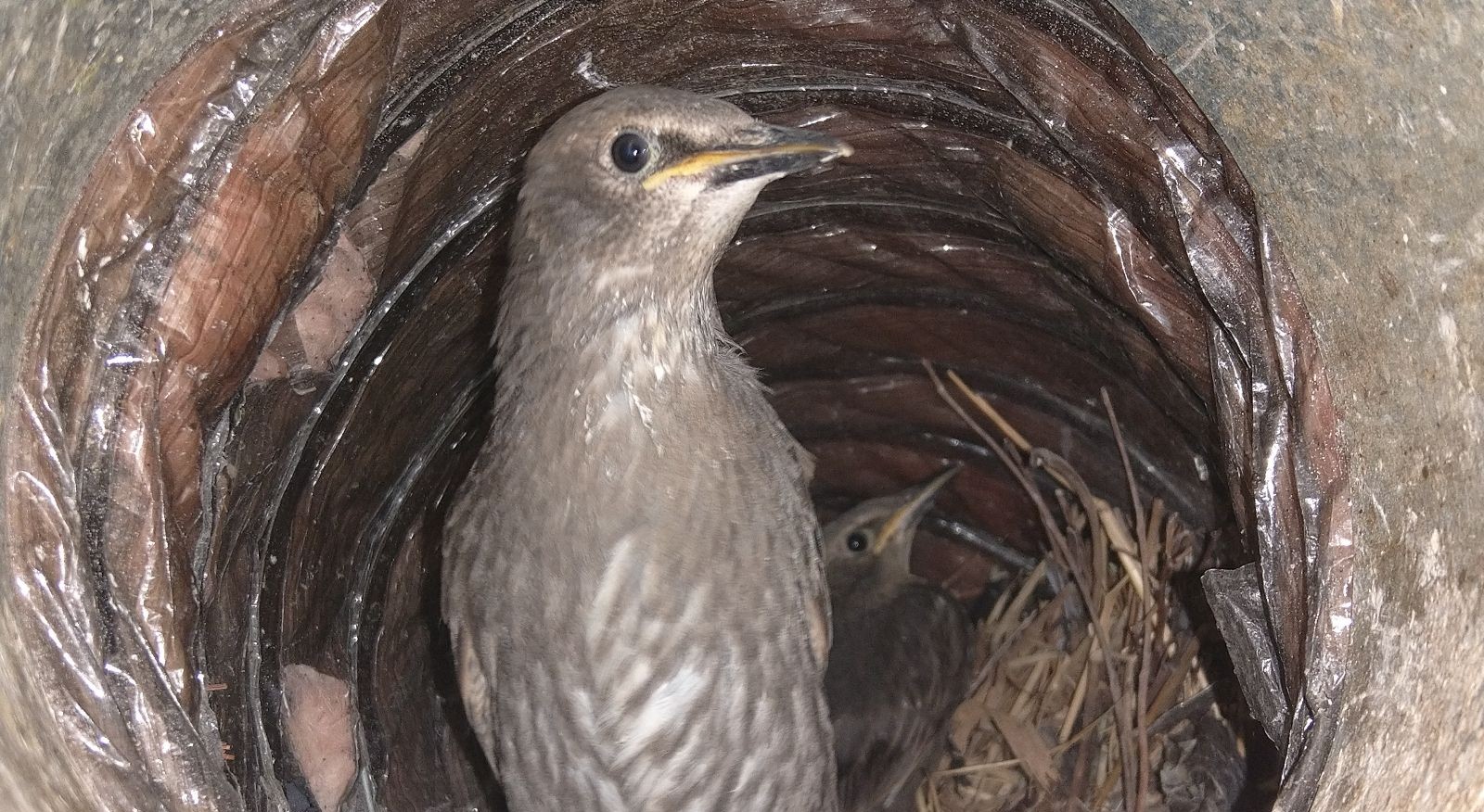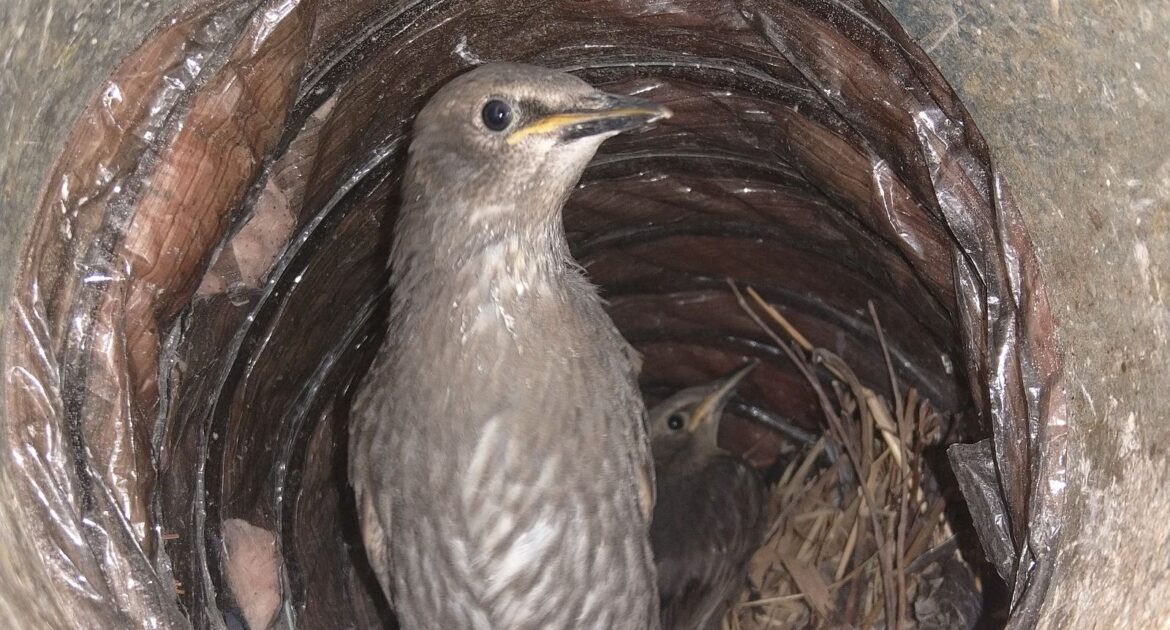Birds may be delightful creatures to watch in your backyard, but when they decide to build their nests in your HVAC system, the effects are anything but charming. Bird nests in HVAC systems can cause various issues, from reduced efficiency to long-term damage that’s costly to fix. If you’ve noticed birds flying around your unit or suspect nesting activity, it’s essential to act before serious problems arise. Skedaddle Humane Wildlife Control, right here in York Region, knows how critical it is to prevent bird damage to HVAC systems and address bird nesting HVAC issues professionally and effectively.
When birds nest inside HVAC units, the risk goes far beyond the minor inconvenience. Their nests can clog airflow, block ventilation, and interfere with the entire system’s operation. Over time, these seemingly small problems can snowball into expensive and hazardous consequences. Plus, nests often include twigs, feathers, and even droppings, adding to the mess and further compromising the system.
Taking a closer look at the long-term effects highlights why addressing bird nests in HVAC systems should never be delayed. Here’s what can happen if the issue isn’t resolved.
Damage to System Performance
When bird nests block airflow in your HVAC unit, the system has to work harder to maintain a comfortable temperature in your home. This constant strain decreases the unit’s efficiency and dramatically shortens its lifespan.
- Clogged Air Filters: Bird nesting materials can find their way into the system’s filters, restricting airflow and making it harder for the HVAC to push conditioned air throughout your home. This leads to uneven heating or cooling and, in some cases, complete failure of the system.
- Blocked Vents: Nests can obstruct critical ventilation areas, causing the unit to overheat or freeze up. Over time, this stress on the HVAC unit can lead to significant repair needs or full replacement.
- Decreased Energy Efficiency: A system that can’t function properly due to blocked airflow will consume more energy than necessary. This results in higher energy bills for the homeowner and a larger carbon footprint.
These performance issues are not just costly; they can also create a less comfortable living environment. Preventing bird damage to HVAC units by acting quickly is the best way to avoid these problems.
Health and Safety Hazards
Bird nests can pose a serious risk to you and your family’s health. The materials and droppings found in nests carry bacteria, mould, and even parasites that could find their way into your home’s air supply.
- Air Quality Concerns: When bird nesting debris is sucked into the HVAC system, it often ends up in your vents. This can contaminate the air circulating inside your home, causing unpleasant odours and triggering respiratory issues or allergies.
- Spread of Diseases: Bird droppings are known to harbour harmful pathogens like histoplasmosis and Salmonella. Exposure to these can lead to severe health problems, especially for people with weakened immune systems.
- Fire Hazards: Dry twigs, feathers, and other nest materials can easily ignite if they come into contact with the electrical components or motor of your HVAC system. A nest left unattended could create a potential fire hazard in your home.
By addressing bird nesting HVAC issues early, you can protect your household from unwanted health risks while ensuring your living space remains safe and healthy.
Long-Term Structural Damage
Another problem caused by bird nests in HVAC systems is the damage to your home’s structure over time. Birds don’t just stop at the HVAC unit; they might also peck away at wires or other parts of your house to create or expand their nesting space.
- Damage to Electrical Wiring: Birds may chew on electric wiring associated with your HVAC system, which can cause dangerous malfunctions or system shutdowns. Repairing electrical damage is not only expensive but also time-consuming.
- Corrosion from Droppings: Bird droppings are highly acidic and can eat away at metal components of your HVAC system. Over time, this leads to rust and corrosion that weaken the unit’s structure.
- Roof and Building Damage: Birds often seek entry points through openings in your roof or siding. Once inside, they can damage areas surrounding the HVAC system, creating further repair needs.
Preventing bird damage to HVAC systems means protecting your entire home from the cascading effects of their nesting behaviour.
Increased Maintenance and Repair Costs
The longer bird nests remain in your HVAC unit, the greater the risk of needing expensive repairs or outright replacement. Once nests cause problems like blockages or damage to components, you’ll likely face significant maintenance bills.
- Regular Repairs: Left unchecked, nests might repeatedly disrupt the system, requiring frequent repair visits. This increases costs and reduces the HVAC unit’s reliability.
- Premature Replacement: The cumulative damage to an HVAC system caused by bird nesting over time may lead to an early replacement. Given the high cost of new HVAC installations, this is a financial burden no homeowner wants.
- Warranty Voids: Some HVAC warranties may not cover damage caused by animals, meaning homeowners are left to shoulder the cost themselves.
Adding bird nesting HVAC issues to your home maintenance concerns will only become more expensive as time passes. Taking steps early to prevent problems can save you from unnecessary stress and financial strain.
Why Professionals Are Key
When it comes to removing bird nests from HVAC systems, doing it yourself may seem like a quick fix, but it’s rarely effective and often creates more problems than it solves. That’s where we come in. At Skedaddle Humane Wildlife Control, we’ve seen firsthand how DIY attempts can damage HVAC units or unintentionally harm the birds. Without the right tools or expertise, it’s easy to block airways, miss hidden entry points, or disturb the animals in ways that cause unnecessary stress.
We use humane, proven techniques to remove birds safely. One of the tools we rely on is our specially designed one-way doors. These allow the birds to exit their nesting area, but they won’t be able to return. It’s a simple, stress-free solution that effectively resolves nesting issues while keeping the animals safe. Once the birds are gone, we take preventative steps to stop them from returning. By sealing entry points and making the area less appealing for nesting, we help ensure your HVAC system stays bird-free.
Choosing a professional team like ours means peace of mind—not just for your home’s HVAC system but also for the well-being of the wildlife involved.
Don’t Wait to Take Action
If you’ve noticed signs of bird nests in your HVAC systems, waiting to address the issue could lead to bigger headaches down the road. Blockages, reduced efficiency, potential health risks, and increased energy bills are just a few of the problems that can arise. The longer nests remain, the greater the chance for costly repairs.
Our team at Skedaddle Humane Wildlife Control in York Region is here to help you tackle these issues quickly and effectively. We specialize in removing bird nests and preventing bird damage to HVAC systems to keep your home safe and comfortable. With our expertise and humane approach, you can trust us to get the job done right.
Don’t put off action. Request an estimate today and let us protect your HVAC system before minor problems turn into major expenses. At Skedaddle, we’re committed to keeping your home a safe, healthy, and bird-free space.




